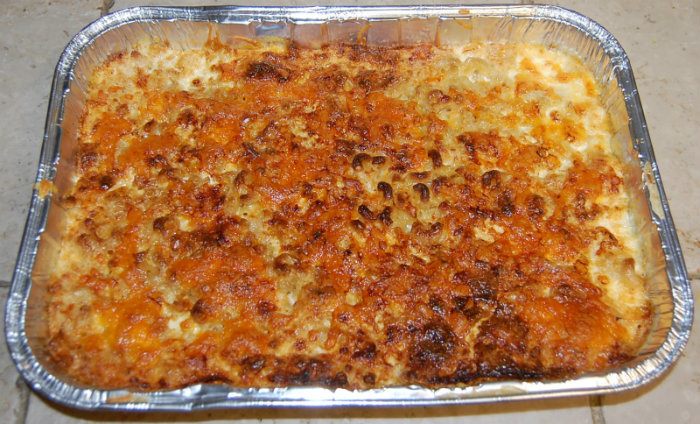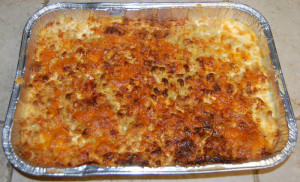Campfire cuisine: Macaroni and cheese while camping? Yes, please!
Plenty of people eat homemade macaroni and cheese while camping, but how many make it over a campfire? Inquiring minds (at least mine) wanted to know. The concept seemed simple, but cooking over a campfire is a far cry away from baking in a traditional oven.
The situation demanded macaroni and cheese. It was the seventh birthday of our youngest child and she LOVES homemade macaroni and cheese. Not as much as chicken corn soup, mind you, but it still ranks right up there.
Of course, the first step is boiling the macaroni noodles, and it is fairly common to boil water over a campfire. Many people do it to prepare water for cleaning dishes, or for a quick meal of spaghetti, Ramen Noodles or instant oatmeal between kayaking trips or fishing expeditions.
All potential campfire cookers should invest in a solid metal cooking rack. This makes things SO much easier. My wife and brother conspired a couple of Christmases ago to make me one and it has been a vital addition to our camping gear.
Before putting a pot of water over a campfire, it is important to protect your pot from charring. Most metal cookware will get covered with a hard-to-scrub black coating unless you are proactive.
Slathering the outside of the pot with liquid dish soap before putting it over the fire is one trick that works. You’ll still get black coloration but it comes right off during the cleaning stage. Another trick is to cover the bottom of the pot with aluminum foil. On this fateful excursion, we opted for the foil.
All campfires used for cooking should be preburned for a while … you want to create a bed of hot coals more than cooking over a fire. It is impossible to totally regulate the heat when cooking over a campfire, but it is much easier if you have a solid bed of coals. For the cooking, check out my six steps to the perfect campfire post.
For those who have never boiled water over a campfire, be warned. It takes much longer to boil water outdoors. I’m not totally sure why, but it never fails to take quite a lot longer than in the controlled setting of your kitchen. To speed up the process and to keep floating ashes out of your water, be sure to use a lid.
Once the macaroni noodles are boiled to the desired softness, drain the water and layer half the noodles on the bottom of a metal lasagna pan. I’m sure there is a more technical term for these sort of pans, but I really don’t know what it would be. Casserole pan maybe?
Next I added a layer of cheese. In our family, the cheesier the better. I typically use slices of Velveeta or similar generic version and then some shredded cheddar. After adding the cheese, I add the rest of the noodles, flattening it out equally over the pan and cover with some more cheese.
The next step is critical — pour milk over the layers of noodles and cheese. Many people add some milk to the versions of mac and cheese they make at home, but the key is adding more than normal. The campfire will be blasting heat directly onto the bottom of the pan where the conventional oven at home offers a more universal heating. The milk helps limit burning.
Lastly, I added a coating of aluminum foil. This keeps ashes out of the mac and cheese while it cooks and helps hold in heat. Remember that since the noodles are precooked, the only goal here is to thoroughly melt the cheese into the noodles.
Another important step to keep your mac and cheese from burning while over the fire is to regularly stir it … much more than you would at home.
After all the cheese is thoroughly melted and stirred in, remove the foil for a few minutes to let some of the milk evaporate and thicken the consistency of your mac and cheese creation.
Ultimately, it was not a hard thing to make over the campfire, and while it did take a little more attention, milk and stirring than the variety we make at home, it was so worth it.
There’s just something about cooking something a little more involved over a campfire that makes the end result that much more satisfying.
Something less satisfying? Scrubbing that black gunk off an unprotected pot after cooking over a fire. During the cooking of our macaroni and cheese, my foil fell off and I didn’t put on a new piece. Guess who still needs to scrub the pot?


